“A Complete Unknown” Costume Designer Arianne Phillips on Channeling the Bob Dylan Mystique
Costume designer Arianne Phillips has never met Bob Dylan, but she did discover a personal connection while researching the singer’s early days for her new project A Complete Unknown (in theaters now). “I was born in 1963 in New York City on Cornelia Street,” she says. “I thought I knew a lot about Bob Dylan, but in the course of my research, I learned that right around the corner, Bob Dylan was living on Fourth Street at the very same time. I have great stories from my parents about that time. Something was in the air.”
Phillips, who won an Oscar winner for Once Upon a Time in Hollywood and previously teamed with Complete Unknown director James Mangold on his Johnny Cash biopic Walk the Line, crafted nearly 70 costumes for Timothée Chalamet. He portrays Dylan’s rapid-fire evolution from Minnesota-bred folkie to New York rocker heckled by purists for “going electric” at the 1965 Newport Folk Festival.
Speaking to The Credits from her Los Angeles home, Philips, wearing a black and white striped “Breton” top straight out of the sixties, explains how she dressed Chalamet’s Dylan in three distinct styles to reflect his ever-changing musical transformations.
A Complete Unknown focuses on the halcyon days of Dylan’s early career. How did you structure the costume story?
We broke the film down into three beats: 1961-62, then 1963-64, and then 1965, so we had a beginning, a middle, and an end.
You started researching Dylan in 2019. So much has been written about the man; I wonder if you relied on any particular reference as your foundational text?
The script. And Jim Mangold’s direction. His vision was my guiding light. As Bob said to Jim, and Jim said to me, “We’re making a fable.” We weren’t making a documentary. You could drive yourself insane trying to excavate “the truth” because everybody who was there has a different account of what happened.
In 1961, Dylan shows up in Greenwich Village looking like a working-class folk singer. What kind of clothes did you select for that period?
Bob Dylan arrived in New York City in search of Woody Guthrie [portrayed in the film by Scoot McNairy], so I used that as the beginning of my character arc. It was documented in the book “A Freewheelin Time” by Dylan’s girlfriend at the time, Susie Rotolo [represented on screen by Elle Fanning’s “Sylvie Russo” character], that Bob only had a rucksack. He had mythic [stories]. “I was a hobo; I jumped trains.” Bob was really a young man from Minnesota, but since he modeled himself after Woody Guthrie, he had that working man aesthetic when he was nineteen years old, wearing carpenter pants—dungarees as they called them. I embraced that.
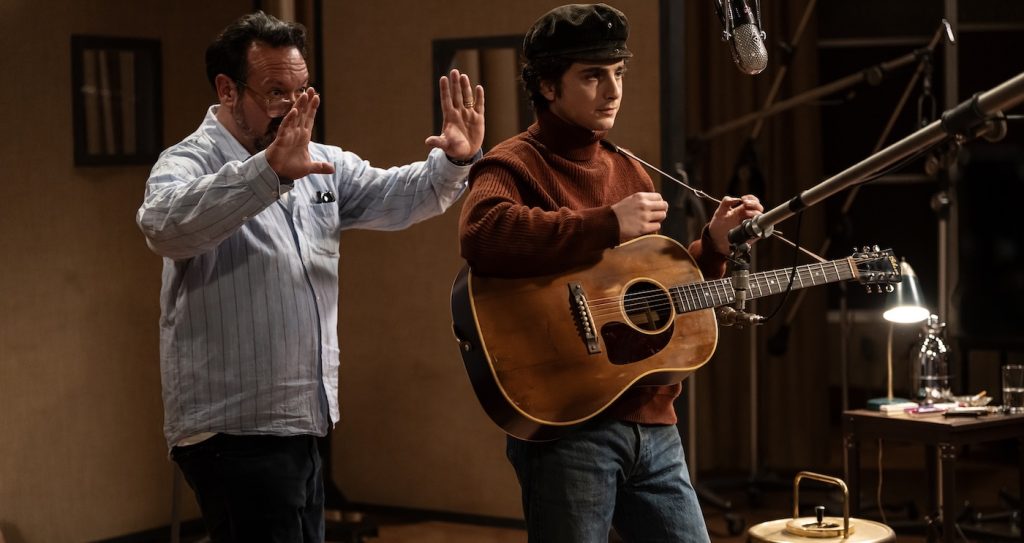
What comes next?
Dylan’s clothes changed from the grungy corduroy hat and organic fibers into suede jackets like the one he wears on the cover of his “Freewheelin'” album. He’s also wearing Levi’s 501 [jeans] on that cover. We take them for granted today as an American classic, but back then, they were a symbol of youthful rebellion. You couldn’t wear blue jeans to Disneyland! It represented this sort of post-beatnik folkie world and understanding that helped me thread together Dylan’s aesthetic.
In 1964, Dylan goes to England. How did that impact his look?
He was very influenced by the first time he went to England. Dylan meets the Beatles, hangs out with Donovan, and changes to more of a mod look with skinnier jeans and Chelsea boots. We see this guy who starts out in dungarees and Pendleton work shirts finding his style, his voice, both visually and musically. Dylan never signed up to be a folk singer; he doesn’t want to be boxed in, and that’s precisely what our story’s about.
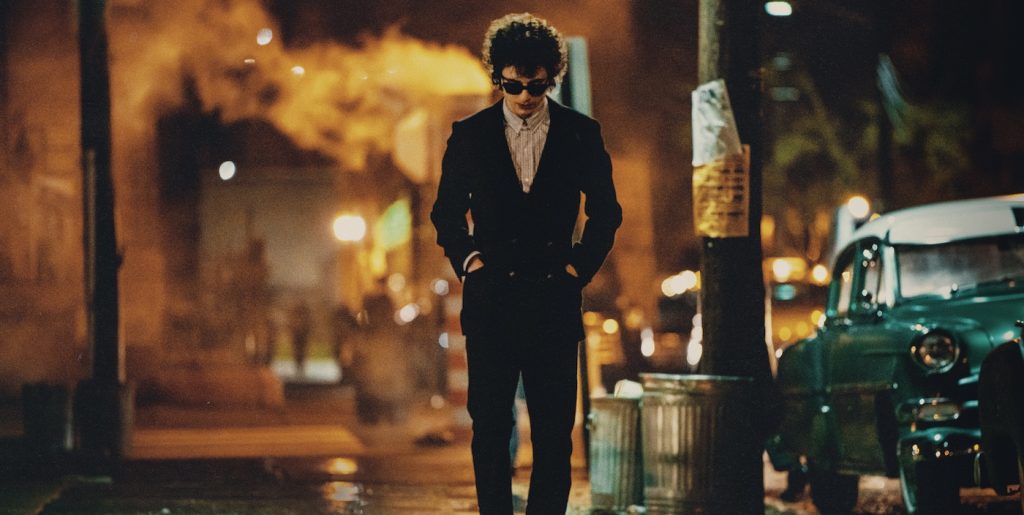
By 1965, Dylan was sporting tailored suits and polka dot shirts ahead of the infamous Newport Folk Festival gig. What’s the backstory there?
Dylan’s having clothes made for him the first time. I pieced together my own backstory for how that happened. His manager, Albert Grossman [Dan Folger], dressed well and spent a lot of time in England, so we designed his suits and shirts as the real Albert Grossman would have had them made. We found pictures of Dylan being measured in some of these great English made-to-measures shops, so I imagined that Albert Grossman took Dylan to shops on Saville Road or Carnaby Street.
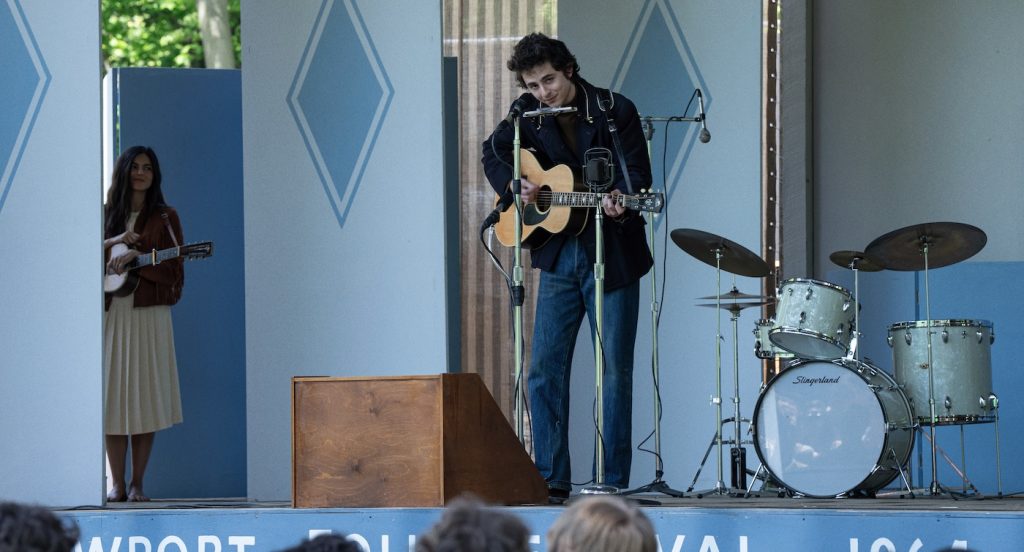
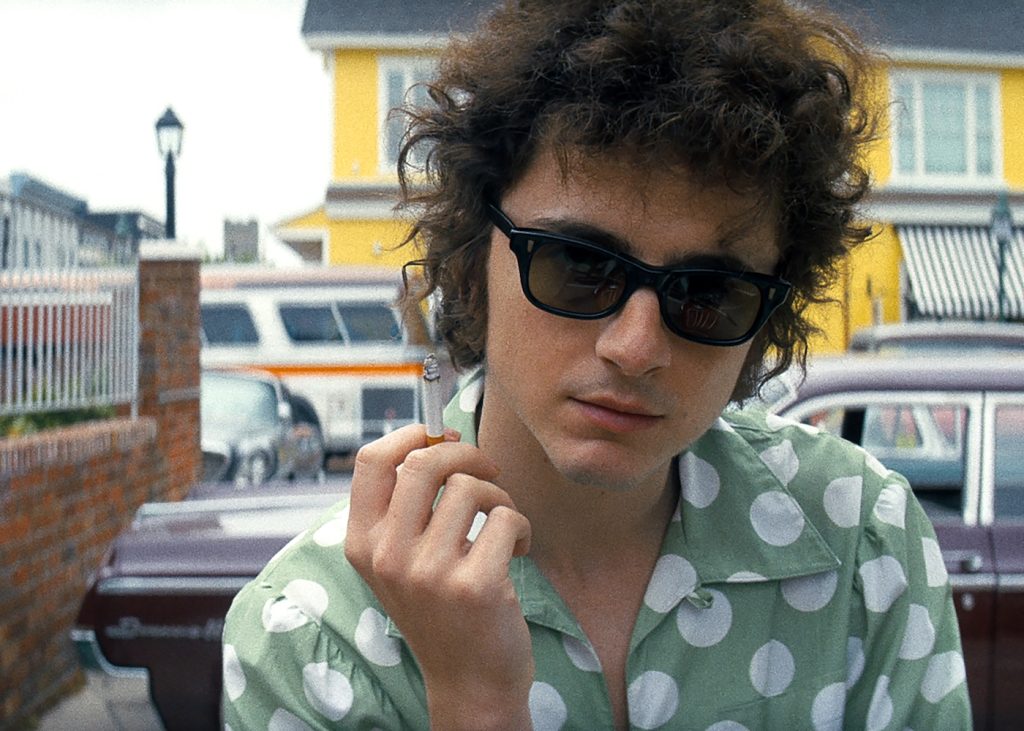
So the silhouette changes, with skinny suits…
And his hair’s getting bigger! I worked closely with Jaime Leigh McIntosh, the hair stylist, and it was really fun seeing his hair getting bigger, tipping toward the Summer of Love. At the same time, his silhouette becomes sinewy and becomes this rock and roll archetype.
How did you fabricate the clothes for Timothée Chalamet?
We used all kinds of fabrics true to the time, like hopsacks, which are harder to find these days, and we were always searching for vintage wools with a certain weight. We had all the shirts made of beautiful cotton and silk blends in Los Angeles by the amazing shop Anto Bespoke, who also made shirts for Elvis Presley and Frank Sinatra. Since Bob wore a lot of leather and suede, we also had specialty makers and boot makers.
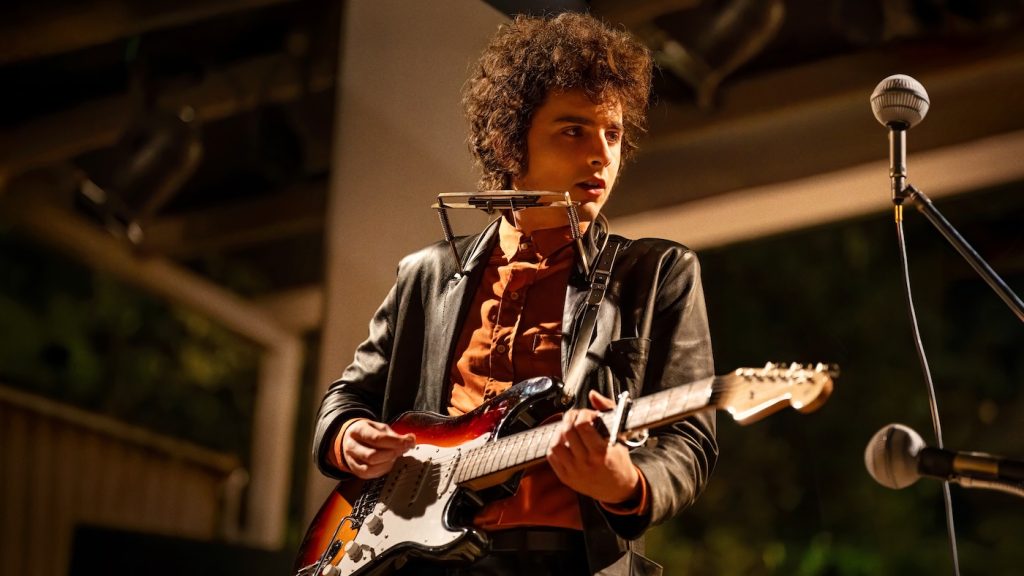
What about vintage clothing?
Timmy wears some vintage pieces, as do other characters. I always like to add a base layer to the overall concept, just as we did with Walk the Line and The People Versus Larry Flynt and W.E., where we recreated famous events. It’s impossible to re-create the fabrics and the prints of those times; there’s a feel to them and the way the clothes hang on you.
Once he becomes famous, Dylan starts wearing sunglasses. Where did you find the shades?
That’s actually wardrobe and props working together. Initially, I pulled from Old Focals in California, owned by this wonderful guy Russ Campbell, and he knew exactly what the glasses were: Bausch + Lomb. So, we used vintage sunglasses sourced through Old Focals.
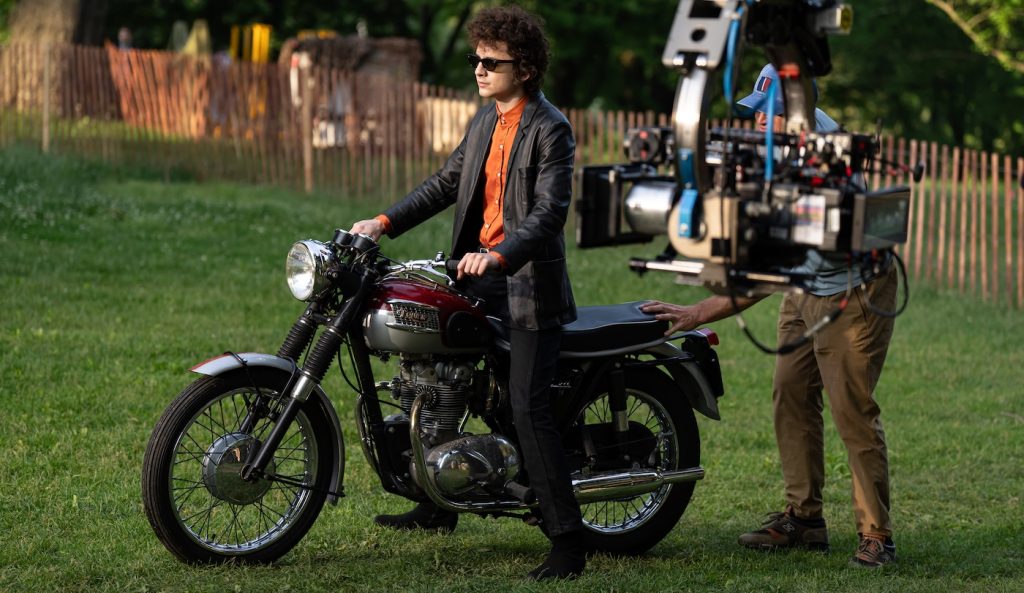
The dark glasses seem to go hand in hand with Dylan’s rising fame?
From my personal assessment, Dylan was shy and socially awkward, and the fame happened so fast that he really needed those sunglasses for his anonymity. You can imagine what it must have been like for a young person to get that much attention.
A Complete Unknown captures this early sixties subculture populated by colorful characters like musicologist Alan Lomax (Norbert Leo Butz], Dave Van Ronk [Michael Chernus], and Pete Seger [Edward Norton]. What size crew did you hire to bring this story to life?
I had up to 40 people on my crew. Timmy had almost 70 costume changes, and we had 128 speaking parts. One through ten on the call sheet each had at least 15 or 20 changes. And then we had 5,000 extras to dress, so we had teams of crews fitting background players for all these big concert scenes.
This chapter of Dylan’s story is rooted very specifically in Greenwich Village. Where did you shoot A Complete Unknown?
In New York and New Jersey. I was very fortunate to make a movie where it took place – that is a gift these days and not always something you can afford to do budget-wise. The great thing about filming in New York is that you get to work with so many talented East Coast artisans who also work in theater. It’s very helpful to have costumers, ager-dyers, tailors, and seamstresses who understand how to develop costumes for people who perform live in front of an audience, as they do in this film. You want your clothes to help the actors access their characters, so for me, making a costume that feels like the part is just as important as how it visually informs the audience.
A Complete Unknown is in theaters now.
For more stories on 20th Century Studios, Searchlight Pictures, Marvel Studios, and what’s streaming or coming to Disney+, check these out:
The Red Hulk Arrives in New “Captain America: Brave New World” Teaser Trailer
Feral Frame: How “Nightbitch” DP Helped Amy Adams Unleash Her Inner Beast
Featured image: Timothée Chalamet in A COMPLETE UNKNOWN. Photo by Macall Polay, Courtesy of Searchlight Pictures. © 2024 Searchlight Pictures All Rights Reserved.



